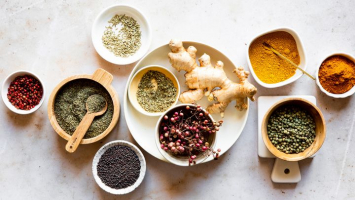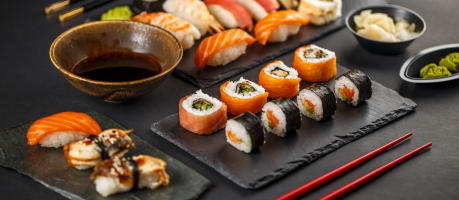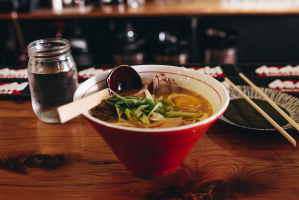Top 12 Most Popular Japanese Spices & Condiments
Japanese cuisine is known for its rich flavors and unique combinations of spices and condiments. Here are some popular Japanese spices and condiments that are ... read more...widely used.
-
Shichimi Togarashi has a long history in Japanese cuisine. It originated in the Edo period (1603-1868) and was initially used as a medicinal blend to aid digestion and provide warmth during cold winters. Over time, it gained popularity as a flavorful spice blend and became a staple in Japanese kitchens.
Shichimi Togarashi is a versatile spice blend that can be used in various ways. It is often sprinkled directly onto dishes as a finishing touch to add flavor and heat. It can be used as a table condiment, allowing individuals to adjust the spiciness according to their preference. Additionally, it can be used as an ingredient in marinades, dressings, and sauces to infuse dishes with its unique flavor.
While the basic recipe for Shichimi Togarashi includes the seven key ingredients mentioned earlier, there can be regional and individual variations. Some blends may incorporate additional ingredients like black sesame seeds, yuzu peel, hemp seeds, or ground sansho (Japanese pepper).
Many of the ingredients in Shichimi Togarashi offer potential health benefits. For instance, red chili pepper contains capsaicin, which may have anti-inflammatory properties and aid in pain relief. Ginger is known for its digestion-enhancing properties, and nori seaweed is a good source of minerals and vitamins.
Shichimi Togarashi complements a wide range of Japanese dishes. It pairs well with ramen, udon, soba noodles, yakitori (grilled skewered chicken), tempura, donburi (rice bowls), and more. It can also be used to season popcorn, fried foods, and roasted vegetables for a unique twist.
Ingredients- Red chili pepper: Provides heat and spiciness.
- Sesame seeds: Adds a nutty flavor and texture.
- Dried orange peel: Offers a citrusy aroma and slight bitterness.
- Sichuan pepper: Provides a numbing and tingling sensation.
- Nori seaweed: Adds umami and a subtle oceanic flavor.
- Ginger: Provides warmth and a hint of spiciness.
- Poppy seeds or hemp seeds: Optional ingredients that may be included in some versions.
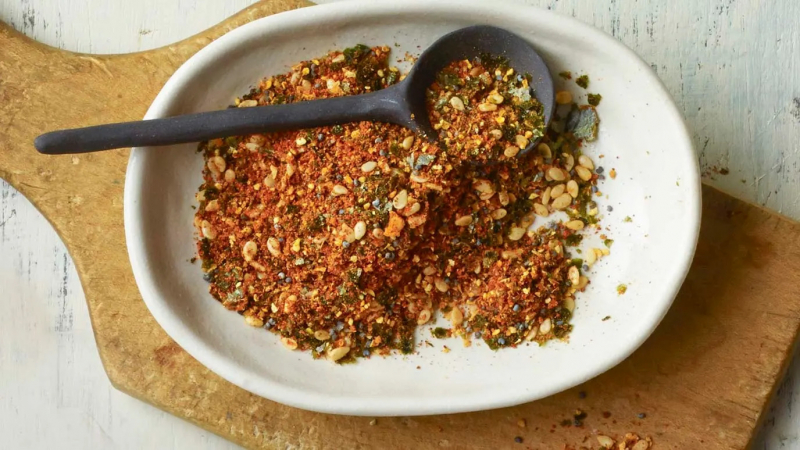
Image by mccormick via mccormick.com 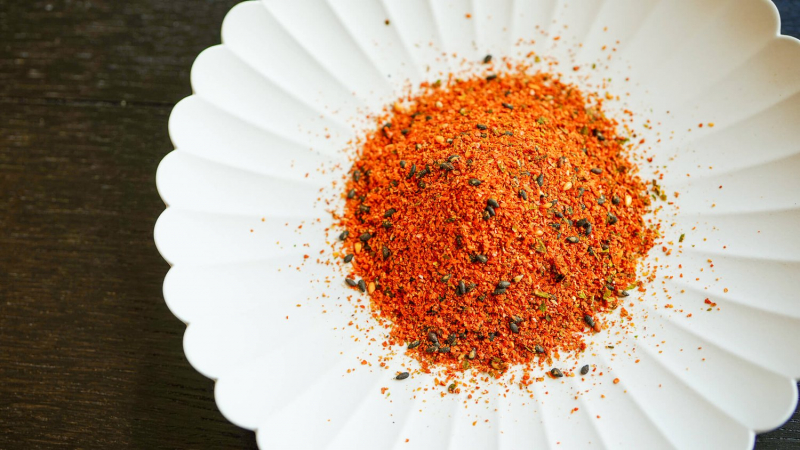
Image by mccormick via mccormick.com -
Wasabi is one of Japanese Spices & Condiments. It is derived from the root of the Wasabia japonica plant, which is native to Japan. It belongs to the Brassicaceae family, along with other cruciferous vegetables like broccoli and cabbage. Wasabi has a distinct flavor that is often described as spicy and pungent, with a slight sweetness and a refreshing, lingering heat. It is similar to horseradish but with its own unique taste.
Wasabi is most commonly associated with sushi and sashimi, where it is mixed with soy sauce as a dipping sauce. It is also used as a condiment for various other Japanese dishes, such as tempura, grilled meats, noodles, and even in mayonnaise-based sauces.
Wasabi is believed to have some potential health benefits. It contains compounds known as isothiocyanates, which may have antimicrobial and anti-inflammatory properties. It is also rich in antioxidants and may aid digestion.
Wasabi is often paired with seafood, as its heat and flavor complement the delicate flavors of fish and shellfish. It can also be used to add a kick to vegetable dishes or mixed into creamy sauces for a spicy twist.
When purchasing wasabi, it is important to check the ingredient list, as some prepared versions may contain additional ingredients beyond the traditional recipe. Fresh wasabi can be harder to find outside of Japan or high-end Japanese restaurants, but some specialty stores may carry it.
Ingredients
- Rhizome (root) of the Wasabia japonica plant
- Water
- Horseradish
- Mustard
- Stabilizers and Preservatives
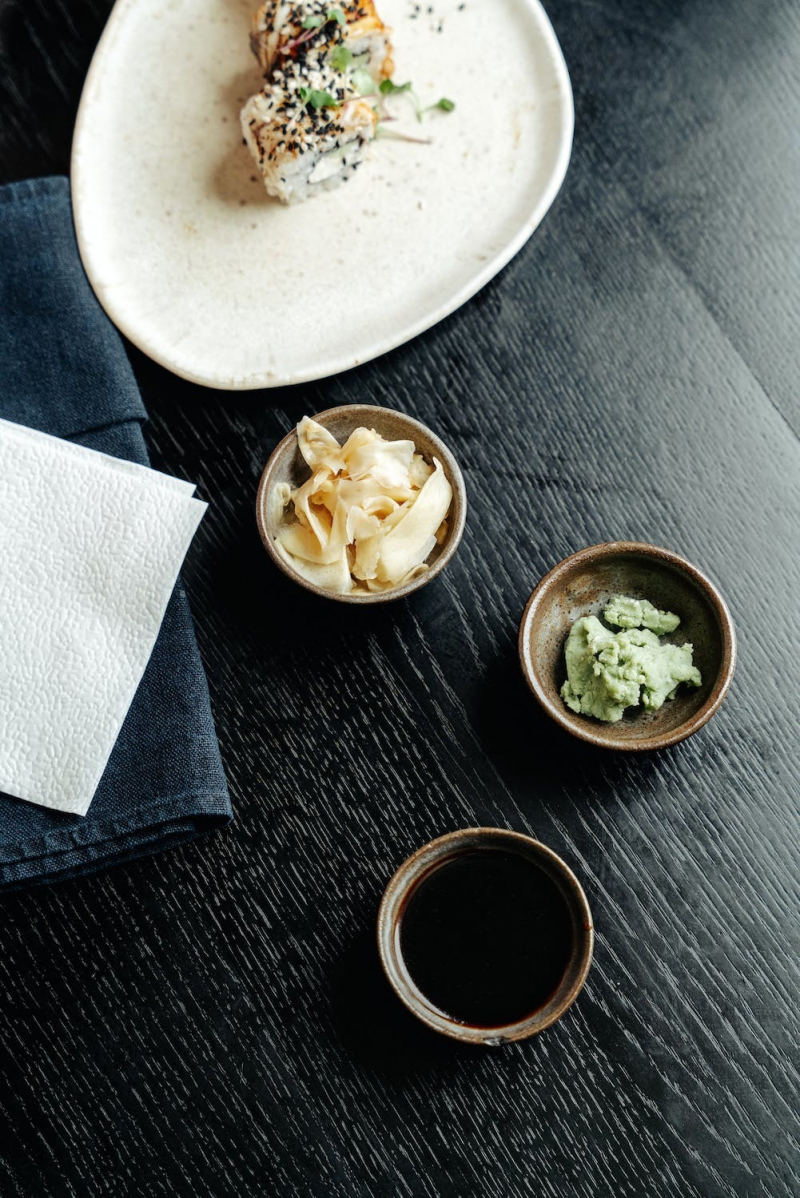
Image by Ivan Samkov via pexels.com 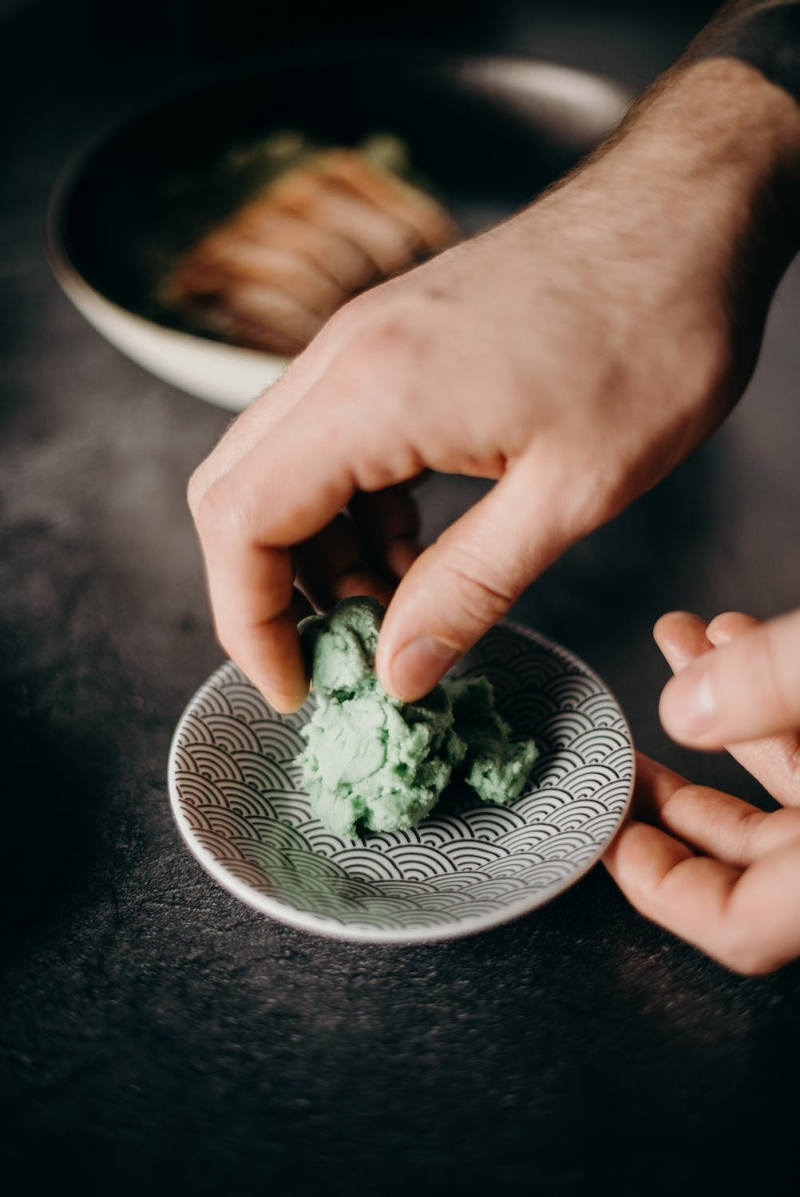
Image by cottonbro studio via pexels.com -
Katsuobushi, also known as bonito flakes, is a traditional Japanese ingredient made from fermented and dried skipjack tuna (Katsuwonus pelamis). Katsuobushi is made through a multi-step process. First, the skipjack tuna is filleted, simmered, and then smoked. After smoking, the fish is fermented with the help of specific molds. The fermented fish is then dried, shaved into thin flakes, and packaged for use.
Katsuobushi has a distinct umami-rich flavor and a savory aroma. It is known for its smoky, slightly fishy, and meaty taste. The flavor of katsuobushi adds depth and complexity to various Japanese dishes.
Katsuobushi is used as a key ingredient in many Japanese recipes, particularly for its umami-enhancing qualities. Katsuobushi is a primary component in making dashi, a traditional Japanese soup stock. It is combined with kombu (dried kelp) to create a flavorful and savory base for soups, stews, and sauces.
Katsuobushi is a source of several nutrients, including protein, vitamins, and minerals. It is also low in fat and carbohydrates. Additionally, katsuobushi contains natural compounds that are believed to have potential health benefits, such as antioxidants and anti-inflammatory properties.
To maintain the flavor and freshness of Katsuobushi, it is recommended to store it in a cool, dry place away from moisture and direct sunlight. Once opened, it is best to seal it tightly or transfer it to an airtight container to preserve its quality.
Ingredients
- Skipjack tuna (Katsuwonus pelamis)
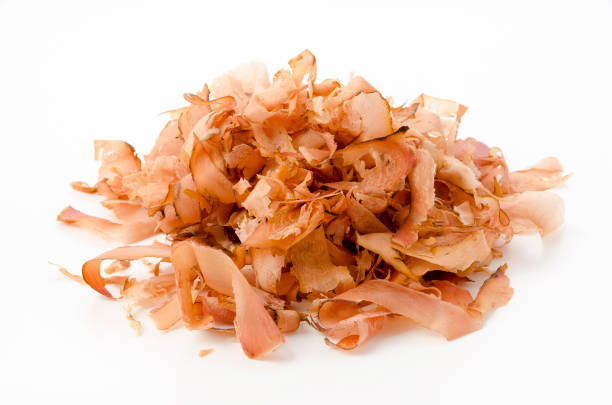
Image by istock via istockphoto.com 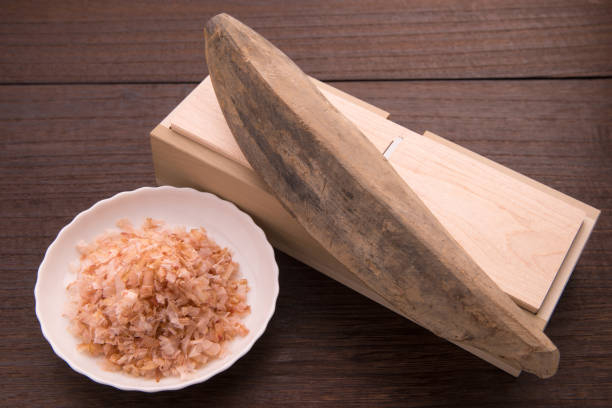
Image by istock via istockphoto.com -
Japanese mayonnaise, also known as "Kewpie mayonnaise," is a popular condiment in Japanese cuisine. It has a unique flavor and creamy texture that distinguishes it from other types of mayonnaise.
Kewpie is a well-known brand of Japanese mayonnaise that has gained popularity both in Japan and internationally. Kewpie mayonnaise is known for its smooth and creamy texture, slightly sweet taste, and distinct umami flavor.
Japanese mayonnaise has a smoother and creamier consistency compared to traditional Western mayonnaise. It has a tangy and slightly sweet flavor profile, with a hint of umami that comes from the inclusion of seasonings like mustard and vinegar.Japanese mayonnaise is used in a variety of dishes in Japanese cuisine. It is commonly used as a condiment for: Sushi and Sashimi, Okonomiyaki, Takoyaki, Salads and Sandwiches
Japanese mayonnaise offers a distinct flavor and texture that sets it apart from other varieties. Its creamy consistency and unique taste make it a beloved condiment in Japanese cuisine, adding a touch of umami and creaminess to various dishes.
Ingredients
- Egg Yolks
- Vegetable Oil
- Vinegar
- Seasonings
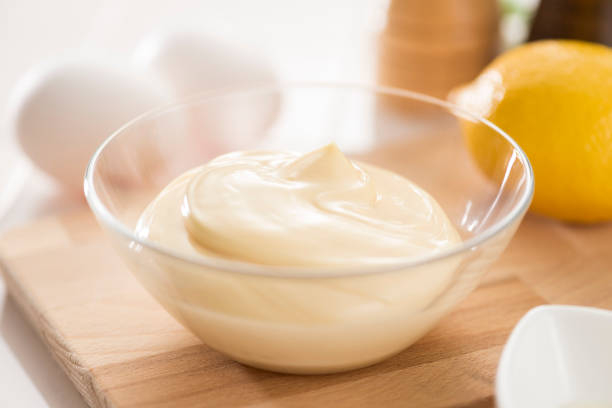
Image by istock via istockphoto.com 
Image by istock via istockphoto.com -
Yuzu kosho is a traditional Japanese condiment made from yuzu citrus fruit and chili peppers. Yuzu is a Japanese citrus fruit known for its fragrant aroma and tangy flavor. The zest and juice of yuzu are used to make yuzu kosho. Yuzu has a unique taste that is a combination of lemon, lime, and grapefruit.
Yuzu kosho is traditionally prepared by grinding or pounding the yuzu zest, yuzu juice, chili peppers, and salt together to form a paste-like consistency. The mixture is then fermented for some time to allow the flavors to meld and develop.
Yuzu kosho offers a unique and complex flavor profile that combines citrusy, spicy, and salty elements. It has a bright, tangy, and aromatic citrus flavor with a fiery kick from the chili peppers. The heat level can vary depending on the types and amount of chili peppers used.
Yuzu kosho is typically stored in a tightly sealed jar or container in the refrigerator. The fermentation process helps to preserve the condiment, and it can last for several months.
Yuzu kosho is cherished in Japanese cuisine for its intense flavor and versatility. It adds a delightful combination of citrusy brightness and spiciness to various dishes, elevating the overall taste experience.Ingredients
- Yuzu Zest
- Chili Peppers
- Salt
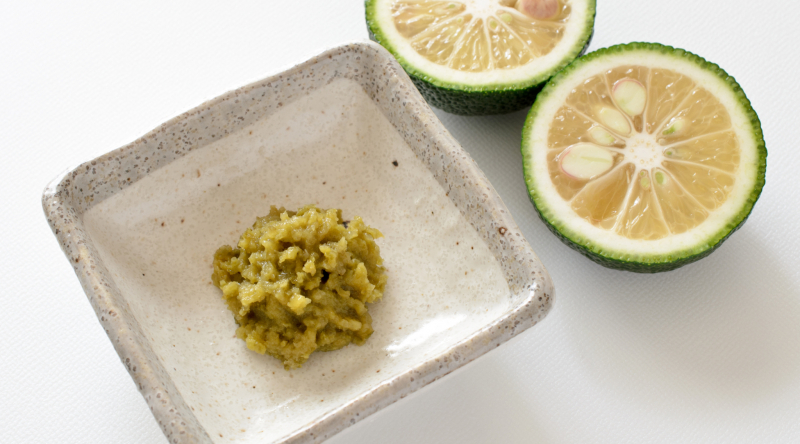
Image by thejapanstore via thejapanstore.us 
Image by thejapanstore via thejapanstore.us -
Tonkatsu sauce is a thick, sweet and savory Japanese condiment commonly used as a dipping sauce for tonkatsu, a breaded and deep-fried pork cutlet. It is also used with other dishes such as katsu (breaded and fried foods), okonomiyaki (savory pancakes), and yakisoba (stir-fried noodles).
The sauce typically has a dark brown color and a smooth texture. It is made from a base of Worcestershire sauce, which is then combined with soy sauce, sugar, vinegar, and various other ingredients. The specific recipe may vary slightly depending on the brand or personal preferences, but the key components remain consistent.
Tonkatsu sauce has a rich and tangy flavor profile with a balance of sweetness and umami. It has a slightly fruity and spiced undertone from the Worcestershire sauce, while the soy sauce provides a savory note. The sauce's sweetness comes from the addition of sugar or sometimes honey, and the vinegar adds a hint of acidity.
To enjoy tonkatsu sauce, it is commonly served alongside tonkatsu or other fried dishes. The deep-fried pork cutlet is typically sliced into pieces and then dipped into the sauce before eating. The sauce complements the crispy texture of the tonkatsu and enhances its flavor.
Tonkatsu sauce is widely available in Japanese grocery stores and can also be found in some international supermarkets or online. Additionally, it is possible to make homemade tonkatsu sauce by combining the necessary ingredients in the right proportions.Ingredients
- Worcestershire Sauce
- Ketchup
- Soy Sauce
- Sugar
- Mirin
- Dijon Mustard
- Garlic and Ginger
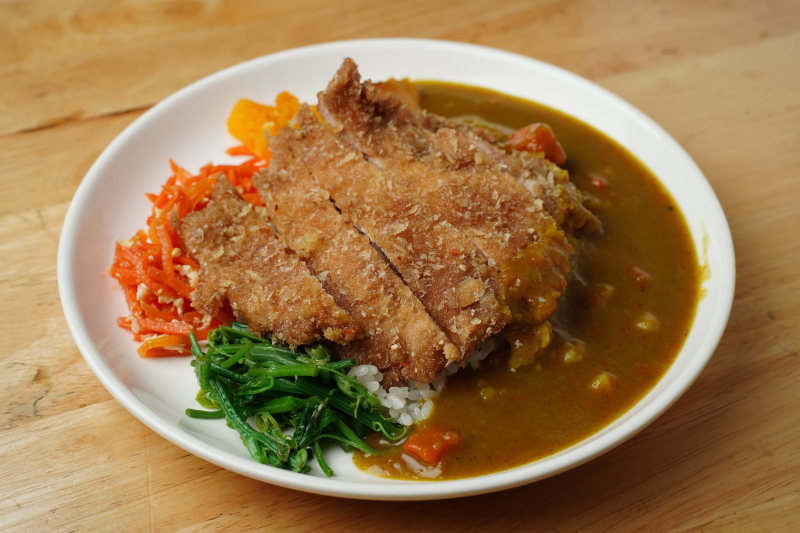
Image by Kai-Chieh Chan via pexels.com 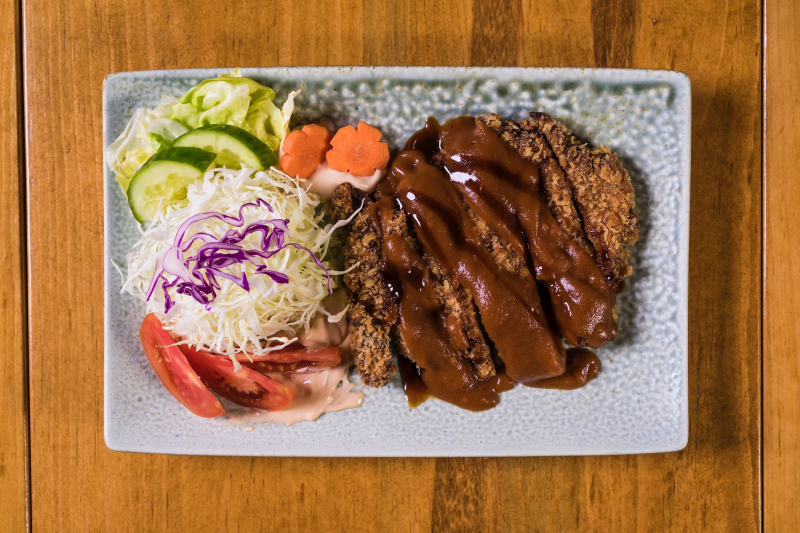
Image by Becerra Govea Photo via pexels.com -
Ponzu is a citrus-based sauce commonly used in Japanese cuisine. It is made from a combination of soy sauce, citrus juice (usually from yuzu or a combination of lemon and lime), rice vinegar, and sometimes mirin (a sweet rice wine) or dashi (a Japanese fish stock).
The flavor of ponzu is a balance of salty, tangy, and slightly sweet notes, with a refreshing citrus aroma. The soy sauce provides a savory umami base, while the citrus juice adds a bright and zesty taste. The vinegar adds acidity, and if mirin or dashi is included, it contributes a subtle sweetness and depth of flavor.
Ponzu sauce is incredibly versatile and can be used in various ways. It is often used as a dipping sauce for grilled or fried foods such as dumplings, tempura, and grilled meats or seafood. It can also be used as a marinade or dressing for salads, sashimi, and vegetables. Some people even enjoy using ponzu as a flavoring agent in soups or noodle dishes.
In addition to the traditional ponzu sauce, there are variations that incorporate other ingredients like grated daikon radish, green onions, or bonito flakes (dried and fermented fish). These variations add additional layers of flavor and texture to the sauce.
Ponzu sauce can be purchased ready-made from Japanese grocery stores or online, but it can also be made at home by combining the necessary ingredients in the right proportions. Homemade ponzu allows for customization based on personal preferences and availability of ingredients.
Ingredients
- Soy Sauce
- Citrus Juice
- Rice Vinegar
- Mirin
- Dashi
- Sugar
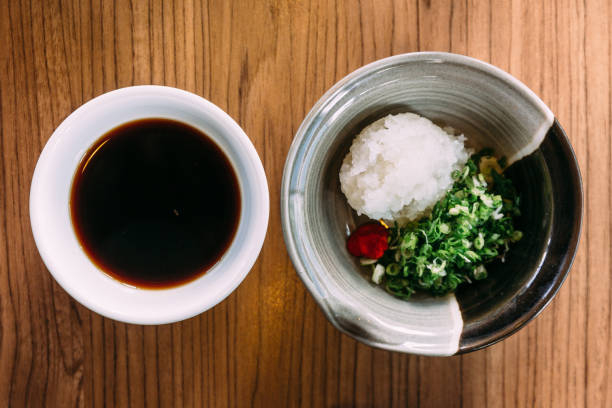
Image by istock via istockphoto.com 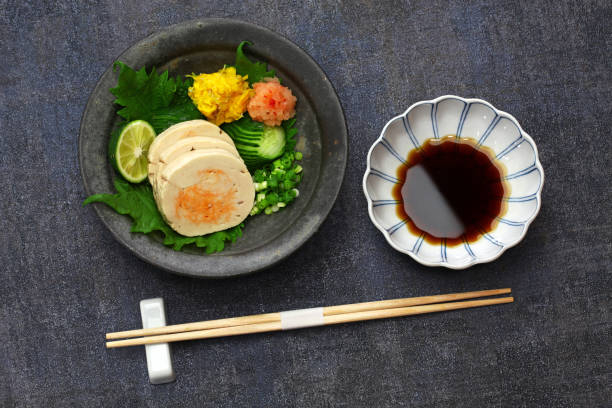
Image by istock via istockphoto.com -
Rayu, also known as chili oil or chili-infused oil, is a popular condiment in Japanese and Chinese cuisine. It is made by infusing vegetable oil with dried chili peppers and sometimes other aromatic ingredients. Rayu adds a spicy and flavorful kick to dishes and is commonly used as a topping or seasoning.
The primary ingredient in rayu is dried chili peppers, which can vary in heat level depending on personal preference. Common varieties used include red chili peppers, such as Tien Tsin peppers or bird's eye chilies. The chili peppers are typically crushed or ground to release their spicy flavors.
In addition to chili peppers, rayu often incorporates other ingredients to enhance the flavor. These can include garlic, ginger, sesame seeds, sesame oil, and sometimes scallions or other spices. The specific combination of ingredients varies depending on the region and personal preference.
To make rayu, the chili peppers and other ingredients are steeped or cooked in vegetable oil, typically sesame oil or a neutral oil like canola or soybean oil. The heat from the chili peppers infuses into the oil, creating a spicy and aromatic mixture. After the infusion process, the solids are strained out, leaving behind the flavored oil.
Rayu is commonly used as a condiment and flavor enhancer. It can be drizzled over noodles, stir-fries, rice dishes, dumplings, soups, or even pizza to add a spicy kick. The oil can also be used as a base for making spicy dressings or marinades.
Rayu is readily available in Asian grocery stores or online, and it comes in various brands and heat levels. Some variations may have additional ingredients like sesame seeds or crispy garlic flakes for added texture. Alternatively, it is possible to make homemade rayu by infusing oil with dried chili peppers and desired aromatics.
Ingredients
- Dried Chili Peppers
- Vegetable Oil
- Garlic
- Ginger
- Sesame Seeds
- Sesame Oil
- Salt
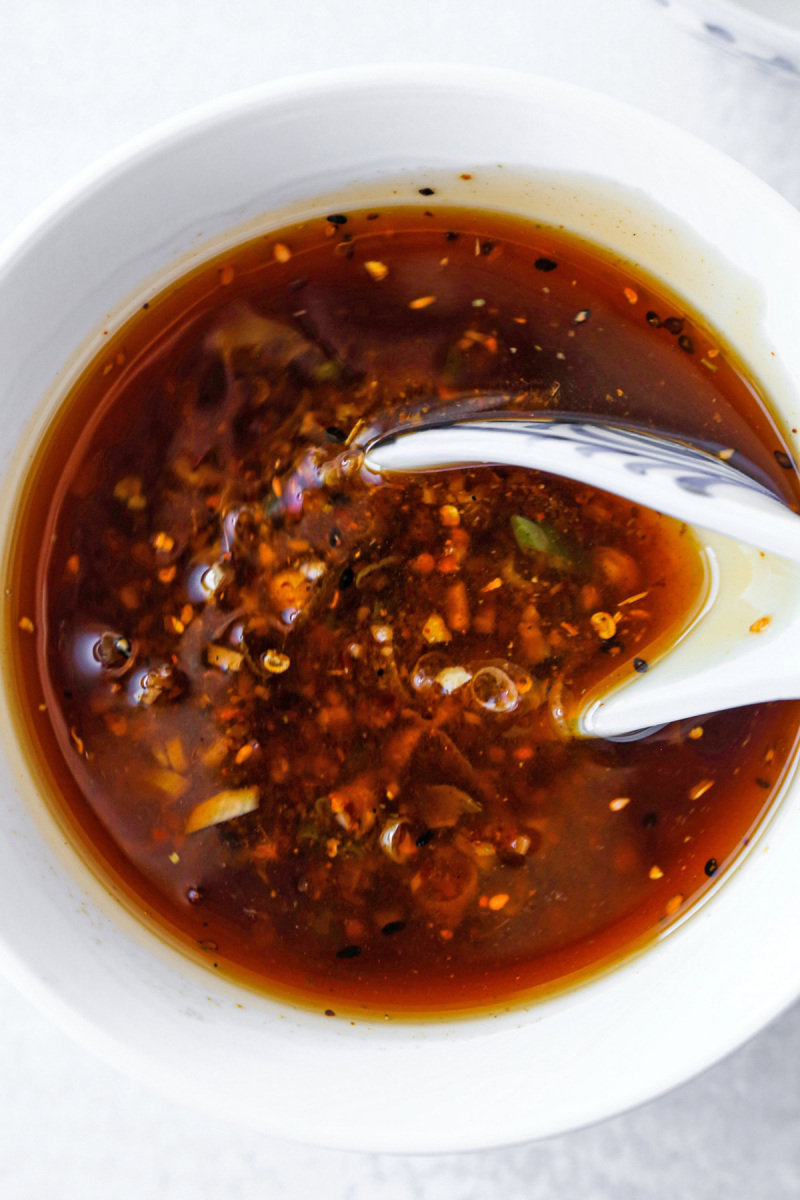
Image by pickledplum via pickledplum.com 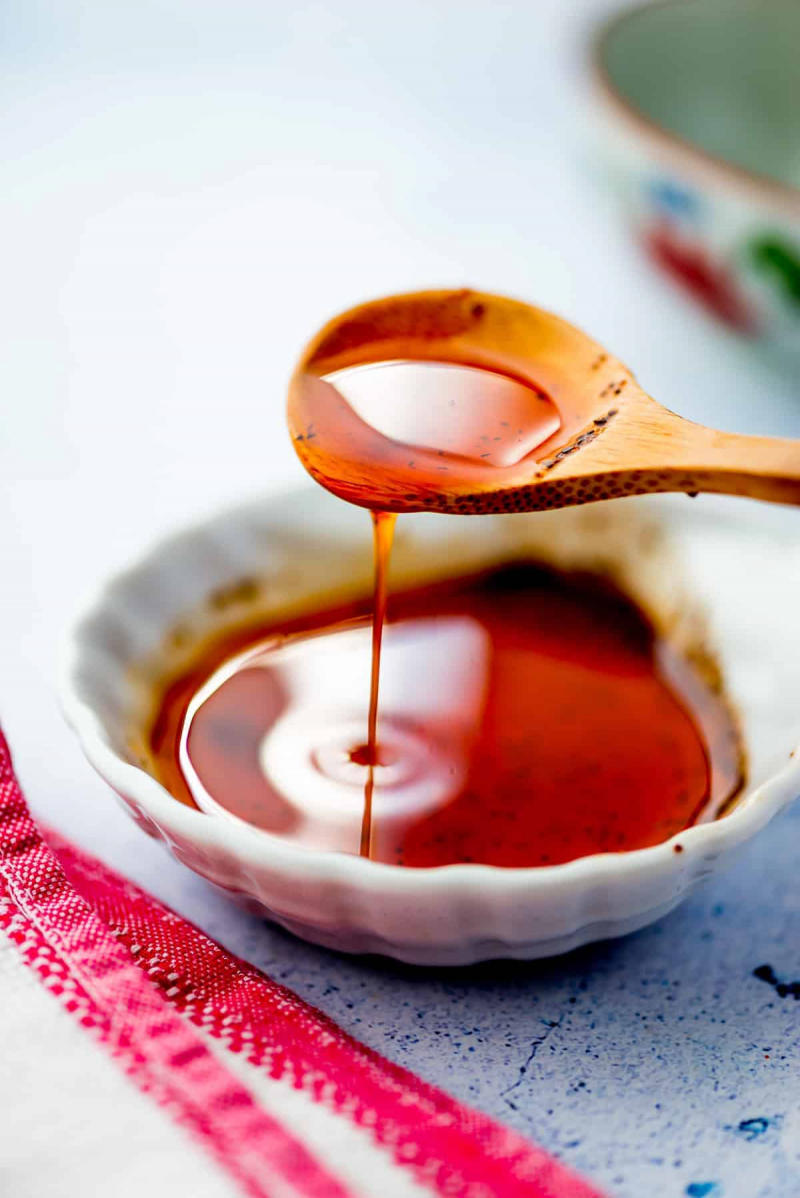
Image by pickledplum via pickledplum.com -
Furikake is a popular Japanese seasoning that is commonly used as a topping for rice. It typically consists of a mixture of dried and ground ingredients such as seaweed, sesame seeds, salt, sugar, and often includes other flavorings like bonito flakes, dried fish, or vegetables. The word "furikake" means "sprinkle over" or "shake on" in Japanese, indicating its usage as a seasoning.
Furikake is known for adding a burst of flavor to plain steamed rice, transforming it into a more flavorful and appetizing dish. It comes in various flavors and variations, allowing people to choose their preferred taste. Some common types of furikake include nori (seaweed) furikake, sesame furikake, and bonito furikake.
To use furikake, you simply sprinkle it over cooked rice and mix it in. It can also be used to enhance the flavor of other dishes, such as noodles, salads, and vegetables. Furikake is widely available in Japan and can be found in most Asian grocery stores around the world. It often comes in small jars or packets.
Ingredients
- Dried Bonito (Katsuobushi)
- Soy Sauce
- Seasoned Fish or Seafood
- Dried Egg
- Vegetables
- Seasonings and Spices
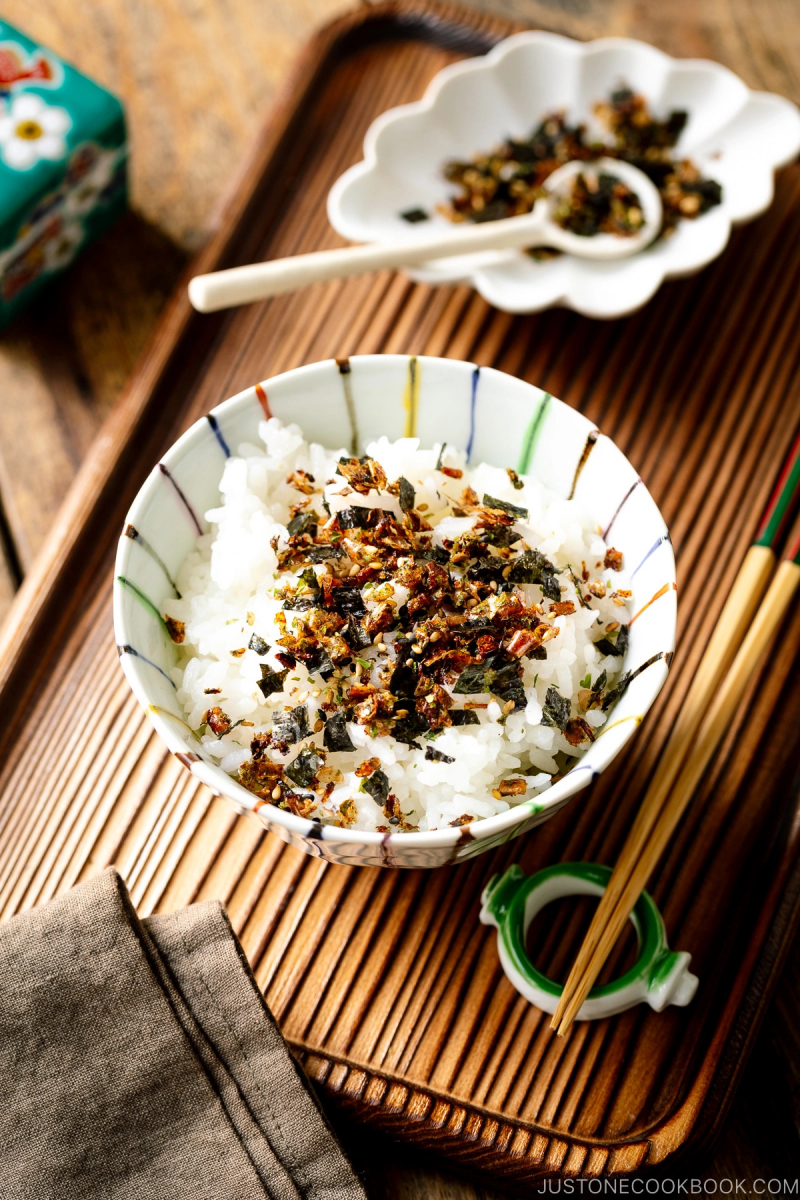
Image by chopstick chronicles via chopstickchronicles.com 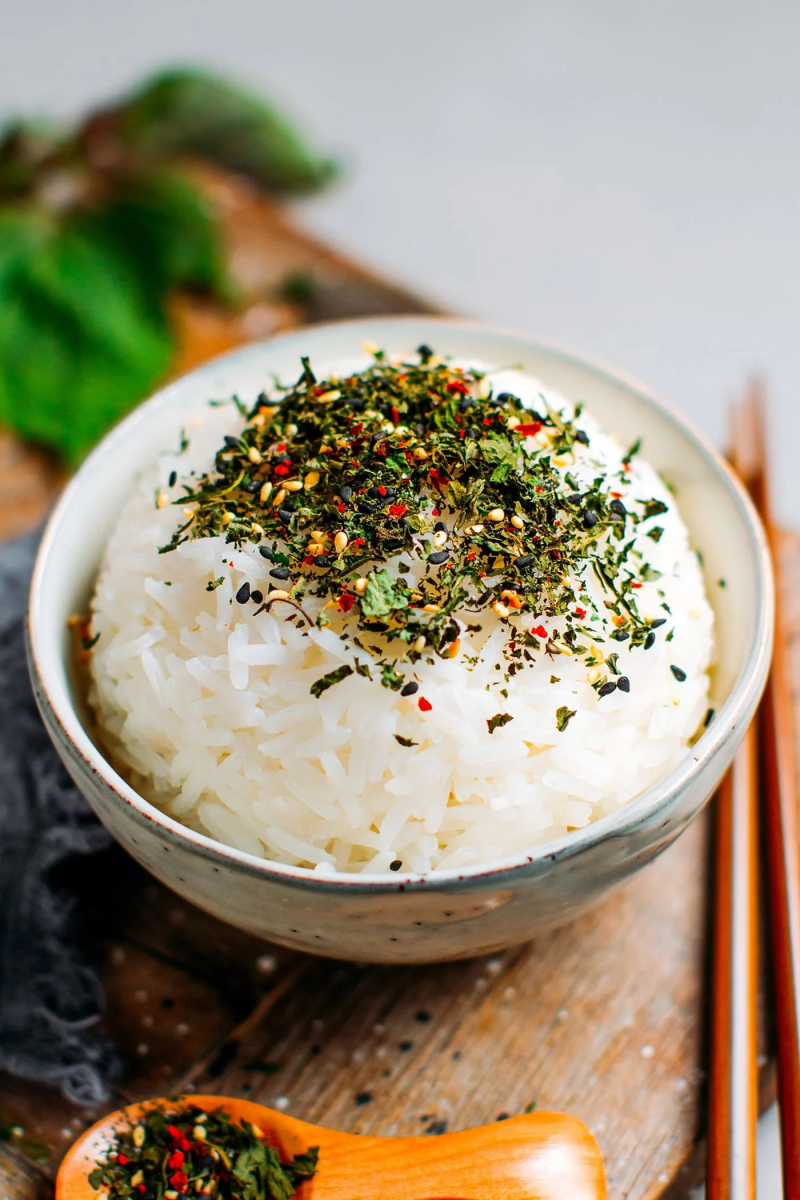
Image by chopstick chronicles via chopstickchronicles.com -
Aonori is a type of edible seaweed or algae that is commonly used in Japanese cuisine. It is often referred to as green laver or green seaweed. Aonori has a vibrant green color and a unique flavor that is somewhat similar to seaweed but with a more delicate and slightly sweet taste.
Aonori is typically harvested, dried, and then powdered or flaked before being used in various dishes. It is a popular ingredient in Japanese dishes such as okonomiyaki (a savory pancake), takoyaki (octopus balls), and yakisoba (stir-fried noodles). Aonori can also be sprinkled on top of rice, noodles, or soups to add flavor and visual appeal.
In addition to its culinary uses, aonori is known for its nutritional value. It is rich in dietary fiber, vitamins, and minerals, including calcium, iron, and iodine. Aonori is also low in calories and fat, making it a healthy ingredient choice. Overall, aonori is a versatile ingredient that adds both flavor and nutritional benefits to a variety of Japanese dishes.
Ingredients
- Okonomiyaki
- Takoyaki
- Yakisoba
- Onigiri
- Miso Soup
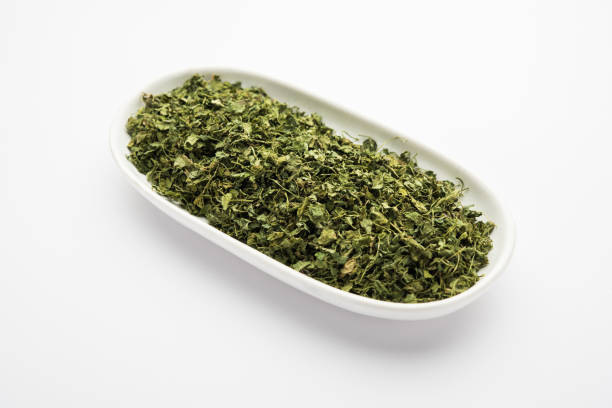
Image by istock via istockphoto.com 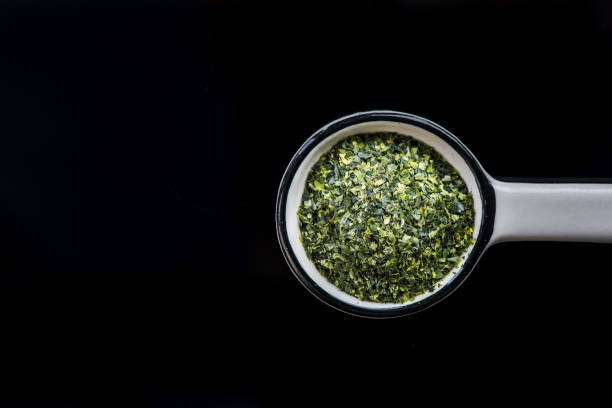
Image by istock via istockphoto.com -
Karashi is a type of Japanese mustard that is commonly used as a condiment in various dishes. It is made from ground mustard seeds and has a strong, spicy flavor. Karashi is often served alongside dishes like grilled meats, tempura, and hot pot (nabe) to add a punch of heat and tanginess.
Karashi mustard is typically sold as a powder or paste. To make the paste, the powder is mixed with water to achieve the desired consistency. It is known for its bright yellow color and pungent aroma. The spiciness of karashi can vary depending on the brand and personal preference.
In addition to being a condiment, karashi is also used as an ingredient in various Japanese recipes. It is commonly found in dressings, marinades, and sauces, adding a zesty kick to the overall flavor profile.
When using karashi, it is important to start with a small amount and gradually adjust to taste, as it can be quite spicy. It is often served in small portions or on the side, allowing individuals to add it according to their preference.
Ingredients
- Rice
- Soy Sauce (Shoyu)
- Mirin
- Miso Paste
- Dashi
- Nori
- Sesame Oil
- Ginger
- Green Onions (Scallions)
- Bonito Flakes
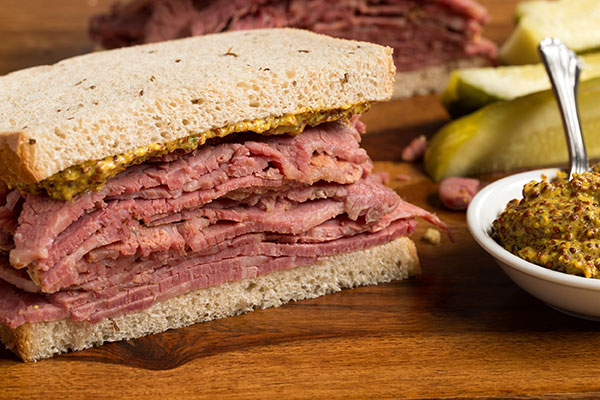
Image by woodland foods via woodlandfoods.com 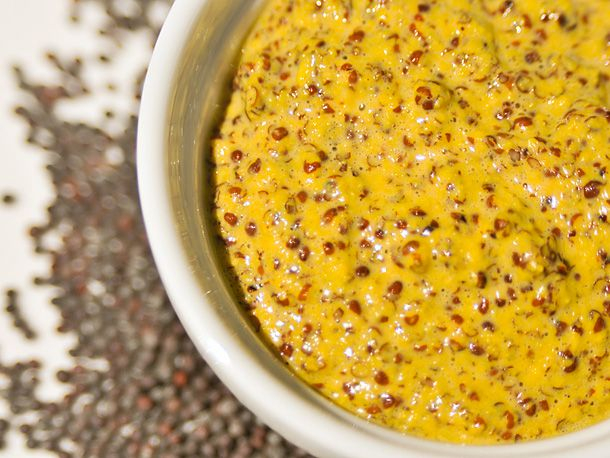
Image by woodland foods via woodlandfoods.com -
Sansho pepper, also known as Japanese pepper or prickly ash, is a popular spice in Japanese cuisine. It is derived from the berries of the Zanthoxylum piperitum plant, which is native to Japan and other parts of East Asia.
The flavor profile of sansho pepper is unique and distinct. It has a citrusy, tangy taste with a slightly numbing sensation on the tongue. This numbing effect is similar to that of Sichuan peppercorns, although sansho pepper has a milder intensity. The spice also carries a subtle heat that adds depth to dishes without overpowering them.
In Japanese cooking, sansho pepper is commonly used as a seasoning for various dishes. It is often sprinkled over grilled meats, tempura, and noodles to enhance their flavor. It is also a key ingredient in some traditional sauces and condiments, such as yuzu kosho, a paste made with chili peppers, yuzu zest, and sansho pepper.
Sansho pepper is available in different forms, including whole berries, ground powder, and mixed with salt. The whole berries can be crushed or ground using a mortar and pestle or a spice grinder. The powder form is more convenient and commonly used in everyday cooking.
Ingredients
- The dried berries of the Zanthoxylum piperitum plant
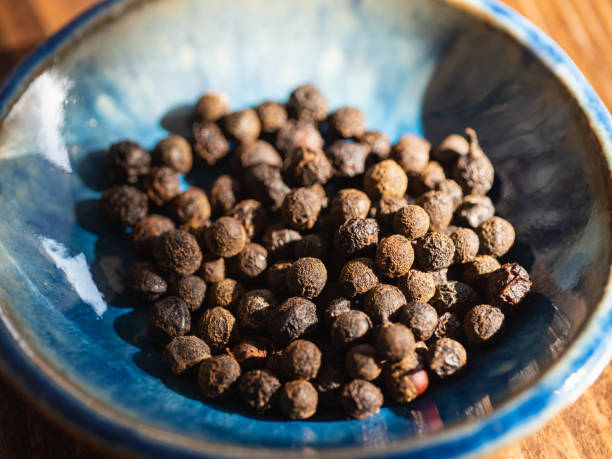
Image by istock via istockphoto.com 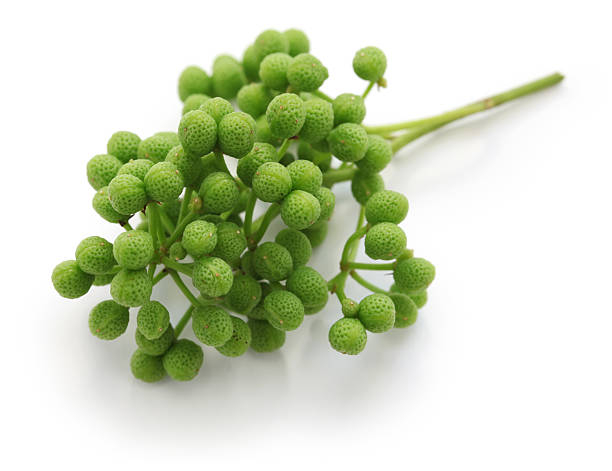
Image by istock via istockphoto.com
















